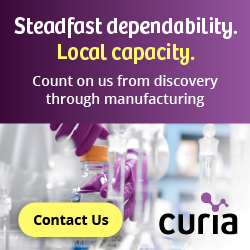ESCP Models - Hepatitis C Medications (Part 2), Oral Therapeutics
By: Josef Bossart, PhD, Managing Director, The Pharmanumbers Group
Four articles earlier this year1,2,3,4 outlined the principles of the ESCP Analysis process with a few examples. The first article in this series provided an abridged summary of the evolution of Hepatitis C (HCV) 5 treatment from naked Interferon alpha treatment through to the latest combination polymerase and protease inhibitors from Gilead Sciences. Part 2 fills in the story starting with the first oral HCV therapeutic, Vertex’s Incivek (telaprevir), which predated the first of the Gilead therapeutics by 2.5 years. Once again, a series of seesaws is used to visualize the consistent improvement of HCV treatment offered by each new product approval. It’s notable how quickly the market developed and the resulting short market life of many products that were discontinued as improved therapeutics were introduced. This is almost never the case in the pharmaceutical industry in which products are left on the market to capture diminishing returns.
(Note: This is a top-level analysis as might be done for any new product concept, but with the benefit of hindsight. The figures and relative “values” relating to Efficacy, Safety, and Convenience presented in this analysis are estimated from public documents, usually the FDA product labels. Treatment costs, Prices, are rough estimates using current US 2021 prices as sourced from GoodRx6, which generally reflect the real-world prices paid by patients who are not eligible for some sort of formulary or governmental program and, as necessary to fill in gaps for discontinued products, published WAC (Wholesale Acquisition Cost) figures. These prices should be consistent on a relative, if not absolute basis, allowing for reasonably relevant pricing comparisons. See notes at the end for additional information on sources and methodology.)
(2001) PegIntron9 (PEGylated Interferon Alpha) Schering-Plough and Rebetol8 (Ribavirin)
Rebetol represented the first of the oral medications to be used for the treatment of HCV. Initially approved in combination with naked Interferon alpha, it saw overall treatment efficacy increase substantially when combined with PEG-IFN (PEGylated Interferon alpha, PegIntron or Pegasys). The combination of PEG-IFN and Rebetol increased efficacy to 40%-50% for Genotype-1 patients, but increased treatment times to 48 weeks. The co-administration of Rebetol more than doubled the response seen with PEG-IFN alone. This combination treatment involved twice daily Rebetol and once-weekly subcutaneous injections of PEG-IFN. In the case of Genotype 2 and 3 patients, efficacy increased to 70%-80% with only a 24-week treatment program. Tolerability was similar in many respects to Intron A7 and Rebetol but with the additional side effects of anxiety and alopecia. Relative pricing jumped to about 14 PU based on the premium price for PegIntron and the extended 48-week treatment period. (One PU is equal to an approved course of treatment with only Intron A, about $6,600.)
Advantage: PEG-IFN and Rebetol Combination

(2011) Incivek10 (telaprevir) Vertex, PEG-IFN and Rebetol
It’s hard to remember that Gilead’s Sovaldi was not the first oral antiviral approved for the treatment of HCV. That distinction falls to Vertex’s Incivek approved in March of 2011. Incivek was approved for use in combination with PEGylated Interferon Alpha (PEG-IFN) and Rebetol (ribavirin). Dosing with Incivek involved three daily oral doses for 12 weeks along with PEG-IFN once weekly, and Rebetol, twice daily. PEG-IFN and Rebetol were continued for an additional 12-36 weeks. Incivek was effectively an add-on to the previously approved PEG-IFN and Rebetol protocol. This new combination increased efficacy to 80% from 40%-50% for Genotype 1 patients. Its use was accompanied by additional safety and tolerability issues, most notably a serious rash that could lead to treatment discontinuation. Pricing increased significantly from 14 PU to about 18 PU. The efficacy improvement though was enough to tip the scale in favor of the Incivek combination.
Advantage: Incivek, PEG-IFN and Rebetol Combination

(2011) Victrelis11 (boceprevir) Merck, PEG-IFN and Rebetol
Two months after the Incivek approval, Merck received approval for their own HCV antiviral, Victrelis. It had a dosing profile similar to Incivek, a combination with PEG-IFN and Rebetol both dosed for a total of 24-48 months. Victrelis was dosed orally three times a day for 32 weeks. Efficacy fell short of Incivek with a 65% success rate for Type 1 patients. Victrelis however did not share the same dermatological safety issues seen with Incivek. The product was priced to offer a small savings over Incivek with a total treatment cost of about 17 versus 18 PU for an Incivek recommended course of therapy. On balance there was little difference overall between Victrelis and Incivek. Both were of course improvements over the previous gold standard, PEG-IFN and Rebetol.
Advantage: Tie, Victrelis or Incivek in combination with PEG-IFN and Rebetol

(2013) Olysio12 (simeprivir) Janssen, PEG-IFN and Rebetol
It took more than 2 years for the next oral HCV product to reach approval, Janssen’s Olysio in November 2013, making a total of four oral products approved to treat HCV. Unlike Incivek and Victrelis, Olysio was a once-daily oral dose. Dosing was for 12 weeks combined with 24-48 weeks of PEG-IFN and Rebetol. Efficacy improved to 90% for Type 1 and Type 4 patients. Tolerability was a concern with issues related to rash and photosensitivity. Treatments involving Olysio were priced at a premium to the two previous oral products at about 21 PU.
Advantage: Three-way tie – Incivek, Victrelis, and Olysio Combinations
(2013) Sovaldi13 (sofosbuvir) Gilead, (PEG-IFN) and Ribavirin (Rebetol or Copegus)
(2013) Sovaldi (sofosbuvir) and Ribavirin
The approval of Gilead’s Sovaldi in December 2013 followed Olysio by two weeks. The initial approval of Sovaldi provided for two drug regimens. The first, similar to that for Incivek, Victrelis and Olysio, involved co-administration of PEG-IFN and ribavirin for Genotype 1 and Genotype 4 patients, all for only 12 weeks. For Type 2 and Type 3 patients the dosing regimen was simplified and involved Sovaldi and Rebetol for 12 or 24 weeks, respectively. Efficacy was at, or above, the levels for the other oral agents. There was also a statement in the Sovaldi labeling that it could be used in combination with Rebetol for Genotype 1 patients if they were interferon ineligible, albeit for an increased dosing period of 24 weeks.
Sovaldi turned the HCV treatment paradigm on its head. Treatment was reduced to 12 weeks for many patients, as was the elimination of weekly PEG-IFN injections. This had a huge real-world impact for patients. Not only were injections eliminated, but so were the tolerability issues associated with interferon. Sovaldi also didn’t carry the same rash, photosensitivity, and drug interaction concerns seen with the earlier oral agents. Pricing was at a premium to earlier agents, certainly on a cost per day, although overall treatment costs were lower than with some of the previously approved oral products. Any savings associated with the elimination of PEG-IFN were captured by Gilead in a higher Sovaldi price tag.
That Sovaldi changed the HCV treatment paradigm was reflected in the sales of Pegasys and PegIntron. Combined sales of these two PEG-IFN products dropped from $1.9 billion in 2013 to $0.4 billion in 2016 and continued to slide thereafter.
Advantage: Sovaldi, PEG-IFN, and Ribavirin Combination, and Sovaldi and Ribavirin Combination

(2014) Harvoni14 (sofosbuvir & lepidasvir) Gilead
Harvoni, approved October 2014, followed Sovaldi by less than a year. It saw the treatment protocol for Type 1 patients simplified to 12 weeks of Harvoni, a single tablet combination of sofosbuvir and lepidasvir taken once daily. Efficacy for Type 1 patients increased to more than 98% and tolerability was excellent with no adverse events exceeding 20% of the population and none of them as severe as seen with ribavirin, PEG-IFN, or most earlier oral agents. Pricing was on par with the earlier combination therapies at about 15 PU.
Advantage: Harvoni (over everything else for Type 1 HCV)

(2014) Viekira Pak15 (ombitasvir, paritaprevir, ritonavir, dasabuvir) AbbVie
Viekira Pak from AbbVie was approved December 2014, 2 months after Harvoni. The treatment protocol included ribavirin for Genotype 1a but not Genotype 1b patients. Neither required the use of PEG-IFN. Dosing was two separate oral tablets, one taken once a day, the other twice a day for a 12- or 24-week period depending on Genotype. In the case of Genotype 1a, the protocol included ribavirin twice a day for a “three pill” treatment protocol. In general, tolerability and safety were not as favorable as Harvoni, although overall efficacy rivaled Harvoni. List pricing for the Viekira Pak combination was a little less then Harvoni, about 13 PU, and possibly much less on contract. With a more complex dosing schedule, possibly a longer treatment period, and the requirement of ribavirin for one group of patients, Viekira Pak was seemingly forced to adopt a “value” proposition to compete with Harvoni.
Advantage: Harvoni (over everything else for Type 1 HCV)

(2015) Daklinza16 (daclatasvir) Bristol-Myers Squibb and Sovaldi (sofosbuvir)
Daklinza was approved less than a year after Harvoni with the restricted indication of Genotype 3 patients in combination with Sovaldi. Efficacy for this target population was excellent at 90% versus the 56% figure for Sovaldi in combination with ribavirin. Both Daklinza and Sovaldi were dosed orally once a day for 12 weeks. The combination had a somewhat higher number of safety-related issues when compared to the Sovaldi and ribavirin combination, most notably a warning for bradycardia. Overall treatment was premium priced at 22 PU including the cost of Sovaldi. Despite this, peak sales of Daklinza exceeded $1.6 billion in 2015 as it provided the best option for Genotype 3 patients.
Advantage: Daklinza in combination with Sovaldi for Genotype 3 patients
Zepatier17 (elbasvir, grazoprevir) Merck
January 2016 saw the approval of Merck’s Zepatier for the treatment of Genotype 1 and 4 patients. Dosing was 12 weeks for treatment for naïve patients and 16 weeks for patients with certain polymorphisms. Ribavirin was also suggested for some patients. Efficacy was excellent for this patient group as was safety in general. Dosing was convenient with Zepatier dosed once a day. Comparatively, Zepatier didn’t provide much in terms of additional efficacy, safety, or convenience for Genotype 1 patients, except for certain subsets of patients. For Genotype 1 patients, the benefits were comparable to Harvoni, for Genotype 4 patients the benefits were comparable to Technivie (ombitasvir, paritaprevir, ritonavir) from AbbVie. The unique selling proposition for Zepatier was pricing. Zepatier was priced at about one-third to one-half less than competing products. This made overall treatment costs even less because it generally did not require the use of a second antiviral product.
Advantage: Tied with existing products (Harvoni and Technivie) for both Genotype 1 and 4 patients. Slight advantage for Zepatier with price sensitive patients and plans

(2016) Epclusa18 (sofosbuvir & velpatasvir, Gilead)
Epclusa, approved June 2016, saw the swapping out of Harvoni’s lepidasvir for velpatasvir while retaining sofosbuvir. Efficacy increased to 95%-100% for all HCV Genotypes 1 to 6. Dosing was one tablet daily for 12 weeks. Tolerability was also improved with Headache, seen in 22% of patients, being the only major issue. Relative pricing dropped to about 11 PU.
At this point, treatment was largely optimized for most patients with Hepatitis C. This of course was not the end of product introductions but raised the bar for any new agent hoping to capture a significant share of the market.
Advantage: Epclusa

(2017) Vosevi19 (sofosbuvir, velpatasvir, voxilaprevir) Gilead
The latest generation of HCV medications from Gilead is a single tablet fixed-dose, three-active combination. Efficacy is similar to Epclusa as is safety and tolerability. Dosing is one tablet daily for 12 weeks. Pricing is the same as Epclusa at 11 PU. While there doubtless are improvements provided by Vosevi, these are not as significant as the benefits provided by successive earlier generations of Hepatitis C treatments. This is largely reflected in sales of Vosevi that have not approached the levels seen with Epclusa, much less Harvoni or Sovaldi.
Advantage: Neither

Mavyret20 (glecaprevir, pibrentasvir) AbbVie
With the treatment needs of HCV largely addressed by Gilead’s Epclusa and Vosevi, AbbVie received approval for Mavyret in August 2017. Efficacy, tolerability, and convenience were comparable to these best-in-class products, with an even shorter 8-week treatment period for treatment of naïve patients. The biggest difference though was in pricing. Treatment costs were about half of the Gilead products for an 8-week Mavyret treatment and about two thirds for a 12-week dosing period. That Mavyret had an impact and uptake was reflected in its 2018 sales of $3.4 billion as compared with $3.9 billion in sales that same year for Gilead’s full portfolio (Sovaldi, Harvoni, Epclusa, Vosevi).
Advantage: Mavyret

Summary and What’s Next?
The text and illustrations reflect a simple summary of the evolution of Hepatitis C treatments as visualized using the ESCP methodology.1,2,3,4 There has been an obvious progression with each new product introduction. Efficacy is now effectively 100%, Safety and tolerability issues are largely eliminated, and Convenience involves once daily oral dosing for as little as 8 weeks.
At this point, the relentless improvements have shaken out many of the earlier products. Only a couple of products currently enjoy significant sales in the US. What was once a $20 billion annual market in the US has been reduced by about three quarters to $5 billion in 2020 as the patient pool is continuously being reduced with what is effectively a cure, and aggressive contract pricing.
The last horizon it seems is Pricing, at least for the more developed pharmaceutical markets. Future price reductions probably await the expiration of patents and the introduction of generic equivalents.
The next, and last, installment of this series provides a summary of the ESCP parameters for each of these products and how the evolution of products has impacted individual product and overall market sales.
References
- Drug Development & Delivery March 2021 Vol 21 No 2, p. 69. https://drug-dev.com/product-development-strategy-escp-estimating-product-performance-part-1-playground-physics/
- Drug Development & Delivery April 2021 Vol 21 No 3, p. 44. https://drug-dev.com/product-development-strategy-escp-estimating-product-performance-part-2-choosing-a-seesaw/
- Drug Development & Delivery May 2021 Vol 21 No 4, p. 39. https://drug-dev.com/prodyct-development-strategy-escp-estimating-product-performance-part-3-mind-the-axle/
- Drug Development & Delivery June 2021 Vol 21 No 5, 40. https://drug-dev.com/product-development-strategy-escp-estimating-product-performance-part-4-building-playgrounds-fences/
- Wikipedia HCV – https://en.wikipedia.org/wiki/Hepatitis_C
- GoodRx – https://www.goodrx.com/
- Intron A – https://www.accessdata.fda.gov/drugsatfda_docs/label/2018/103132Orig1s5199lbl.pdf
- Rebetol – https://www.accessdata.fda.gov/drugsatfda_docs/label/2020/020903s056,021546s012lbl.pdf
- PegIntron – https://www.accessdata.fda.gov/drugsatfda_docs/label/2019/103949s5313lbl.pdf
- Incivek (Discontinued) – https://www.accessdata.fda.gov/drugsatfda_docs/label/2011/202258lbl.pdf
- Victrelis (Discontinued) – https://www.accessdata.fda.gov/drugsatfda_docs/label/2011/202258lbl.pdf
- Olysio (Discontinued) – https://www.accessdata.fda.gov/drugsatfda_docs/label/2013/205123s000lbledt.pdf
- Sovaldi – https://www.accessdata.fda.gov/drugsatfda_docs/label/2020/204671s017,212480s002lbl.pdf
- Harvoni – https://www.accessdata.fda.gov/drugsatfda_docs/label/2020/205834s032,212477s003lbl.pdf
- Viekira Pak (Discontinued) – https://www.accessdata.fda.gov/drugsatfda_docs/label/2014/206619lbl.pdf
- Daklinza (Discontinued) – https://www.accessdata.fda.gov/drugsatfda_docs/label/2015/206843s000lbl.pdf
- Zepatier – https://www.accessdata.fda.gov/drugsatfda_docs/label/2016/208261Orig1s000lbl.pdf
- Epclusa – https://www.accessdata.fda.gov/drugsatfda_docs/label/2021/208341s017lbl.pdf
- Vosevi – https://www.accessdata.fda.gov/drugsatfda_docs/label/2019/209195s003lbl.pdf
- Mavyret – https://www.accessdata.fda.gov/drugsatfda_docs/label/2017/209394s000lbl.pdf
Total Page Views: 1473













